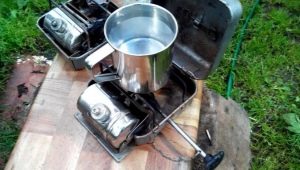Sleeping bags: features, types and recommendations for choosing

An indispensable attribute of any trip to the mountains or nature is a waterproof and warm sleeping bag. High-quality models of sleeping bags provide comfort, restful sleep and good thermal insulation. In this material, you will get acquainted with the features and varieties of modern sleeping bags, as well as with recommendations for their selection.
Description and purpose
For every outdoor enthusiast, a sleeping bag, or just a sleeping bag, is an indispensable item for hiking, hiking or road adventures. Sleep plays a huge tactical role in any campaign - it allows you to recuperate and relax. Unfortunately, it is not always possible to get a comfortable bed with all the amenities while hiking (although some people prefer just such an extreme vacation), a sleeping bag was developed for these purposes.
A high-quality tourist sleeping bag is able to restore strength and fill your body with vigor even in the most severe environmental conditions.

Manufacturing materials
To date, there is a wide variety among fillers or insulation in sleeping bags. All varieties are divided into two types: natural and synthetic. The pros and cons of each of these types will be described below.
natural filler
The warmest and most high-quality sleeping bags for long hikes are characterized precisely by down filler - it is warm and can tolerate significant temperatures. In addition to down (goose, eiderdown), some companies use sheepskin or camel wool, but these are more expensive options for sleeping bags that are rarely found on the Russian market. An alternative option for natural sleeping bags will be wadded models or sleeping bags made of wool. However, these materials have proven to be worse in terms of thermal insulation, terms of use and price.
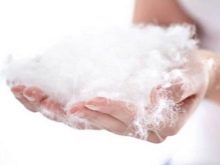

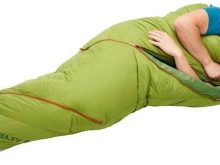
Advantages of downy (or natural) filler.
- Down sleeping bags weigh very little, they are compact (much more compact than the same warm synthetic materials), they are easy to fold and carry.
- It is due to its low weight and large size that the down provides complete thermal insulation. It should be remembered that the sleeping bag does not have its own heat, it only stores the heat that your body gives off. Down occupies a large space between the inner and outer walls of the sleeping bag, thereby reducing heat loss.
- Down sleeping bags are considered the most comfortable and soft, they are pleasant to the touch and it is much more comfortable to sleep in them. Modern synthetic fabrics are able to provide a similar level of softness, but this greatly affects their price.
- With proper and regular care and drying of a down sleeping bag after each trip, it can serve you for a very long time. Therefore, experienced tourists are advised to initially buy down sleeping bags.

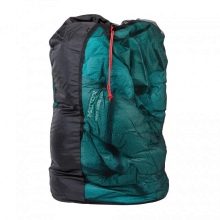

Cons of down sleeping bags
- High-quality and well-crafted warm down is very expensive, harder to get and even harder to care for. With prolonged exposure to cold and without human warmth, the fluff begins to freeze rapidly and completely loses its thermal insulation properties.
- Down absorbs moisture just fine, and therefore it is not recommended to sleep in such sleeping bags outside the tents. Down is extremely sensitive to wet weather with sudden changes in temperature. In the assembled position, a wet downy sleeping bag dries for a very long time, and the down itself begins to rot without drying. Basically, these sleeping bags are used by professional climbers and mountaineers in high-mountain expeditions.
- Down models of sleeping bags are very vulnerable to physical impact. From the slightest scratch or hole, these sleeping bags begin to thoroughly “molt” and lose all the fluff. With the loss of fluff, even in one place of the sleeping bag, all its properties are lost.
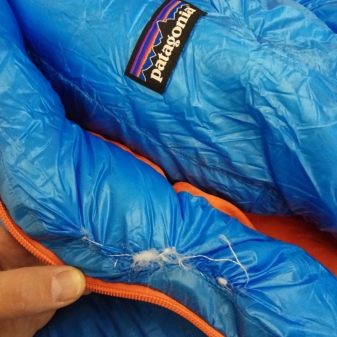
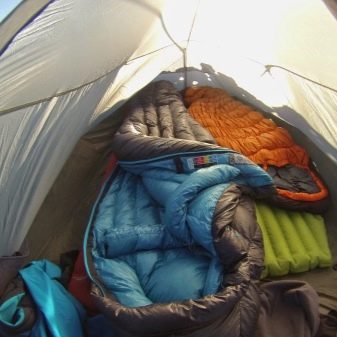
Synthetic fill
Today you can find a huge number of synthetic fillers, whose manufacturers position their material as an “ideal analogue of fluff”. Unfortunately, it is often not possible to determine the actual difference between such fillers, and therefore you have to trust only reputable and branded models of sleeping bags.
In the case of a synthetic sleeping bag, the quality of the insulation can depend on several factors.
- fiber thickness. In a high-quality synthetic sleeping bag, it should be different.Thin fibers will provide thermal insulation, while thick fibers are designed to preserve the state of the material, its elasticity, shape and volume.
- presence of hollow fibers. In the presence of 1 to 7 such fibers in the insulation, the total weight of the sleeping bag is significantly reduced, and its protective qualities are improved.
- Fiber elasticity. Another indicator designed to regulate the elasticity of the sleeping bag and maintain its shape for a long time.
- Siliconization. The presence of this indicator indicates that the sleeping bag model is able to successfully repel moisture and retain heat for a long time.
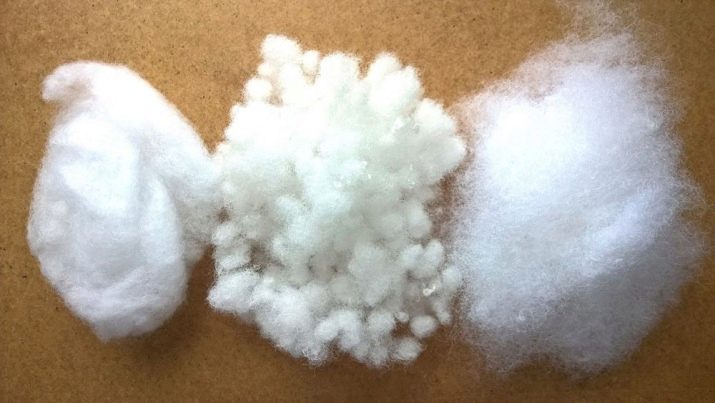
Well-known and expensive brands of synthetic insulation are the following: Thermolight Extreme, Thinsulate, Primaloft, Polarguard. Cheaper analogues: ThermoFill, HolloFiber, Warm-Loft, QualoFil.
Advantages of synthetic fillers.
- Sleeping bags with synthetic fillers are not afraid of moisture and can warm the wearer even when wet. Synthetics dries much faster than down, is easy to wash and does not come out of the sleeping bag in case of damage to the walls of the bag.
- Even the highest quality synthetic sleeping bags are much cheaper than down sleeping bags. This is often a fundamental factor when choosing a sleeping bag.
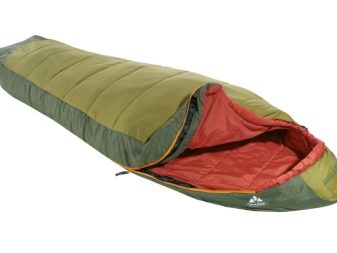
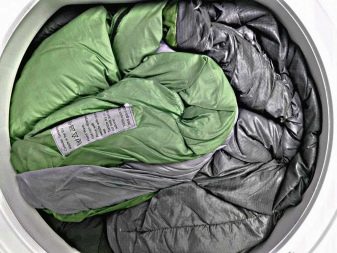
Minuses.
- Synthetic sleeping bags are usually not as compact as down bags. Warm models can weigh up to 5-7 kg, which forces inexperienced tourists to use a car for transportation in case of camping or hiking.
- Durability does not belong to the merits of synthetic materials. Over time, any synthetics deform, begin to deteriorate from moisture and let in more and more cold.
A popular option for synthetic bags for summer hikes is a fleece sleeping bag - such bags are compact, lightweight and able to retain heat for a long time.

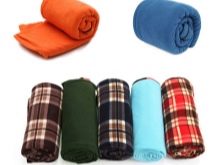

Construction types
The most common are 4 types of sleeping bags, each of which is adapted for certain weather conditions and a certain type of hike and travel.
"Cocoon" or "sarcophagus"
This version of the sleeping bag fully justifies its name - when you look at it, you involuntarily think that the fabric will fit you from all sides. This is not a particularly convenient option for a sleeping bag - it is difficult to roll over and change position in them, which leads to numbness of the limbs. However, these sleeping bags are very warm and completely cover the entire body, including the head, providing complete thermal insulation.
These sleeping bags take up little space, practically do not get wet and are often used specifically for extreme hikes. Some professional models of such sleeping bags open only halfway - the zipper is up to half the length of the sleeping bag, while the rest always remains closed.
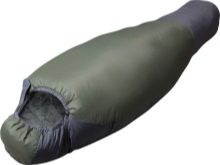
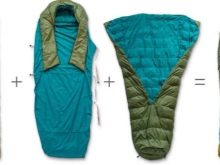
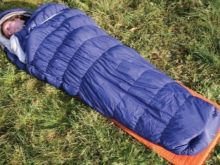
"Blanket"
Almost an ordinary rectangular sleeping bag, with one exception - there is no hood or headrest. This type of sleeping bag is usually used for summer camping trips with tents. They are not particularly warm, get wet easily and dry poorly.
The main advantage and feature of such sleeping bags is the zipper - it is placed on the side in such a way, that you can combine two identical “blanket” type sleeping bags at once into one large one. As a rule, these bags are ordinary blankets quilted on a synthetic winterizer with a zipper, which is why they got their name.

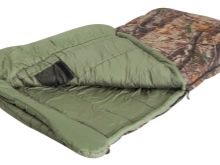
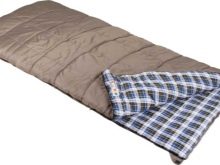
"Bag-tent"
A peculiar version of the sleeping bag enlarged at the head. The peculiarity of this design is that you are completely placed in the bag along with your head and limbs. At the head of such a bag is formed special three-dimensional trapezoid, which provides a large amount of space for repositioning and air intake. The trapezoid is equipped with a zipper and breathable material, which ensures the supply of fresh and clean air from the outside.
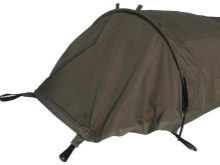


"Sleeping bag"
A standard and well-known type of sleeping bag, which resembles a kind of “blanket”, but is equipped with a headrest or hood. The hood can serve as both a head cover and a pocket to keep clothes and papers dry.

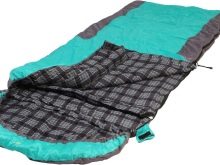
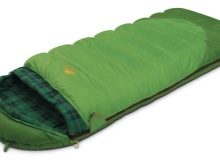
Dimensions and capacity
In addition to the fact that all sleeping bags are divided into two varieties in length (Regular and Long), they are also divided into several types depending on the size and capacity.
- Children's sleeping bags. Usually these are compact ultra-light bags with dimensions of 71 by 145 centimeters, which are sewn from the brightest fabric and have the warmest filler.
- Teenage sleeping bags. Here, the optimal dimensions are 73 by 167 centimeters. They are also often bought by people of small stature and medium-sized physique.
- Sleeping bags of standard type. These sleeping bags are designed for buyers with an average build and standard height. The dimensions here are 84 by 190 centimeters.
- Big sleeping bags. Designed for people of high stature, as well as for overweight people. Dimensions - 84 by 198 or 96 by 205 centimeters, or more.
- Double bags. Bags of this type are characterized by a compact structure with double insulation of the upper part of the bag.Such insulation is justified by the lack of lightning (in most cases) that separates the beds.
Varieties of single sleeping bags are also produced, which, by connecting zippers, are combined into double sleeping bags.

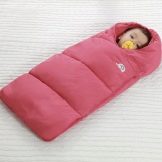
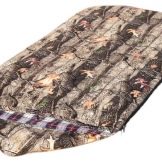
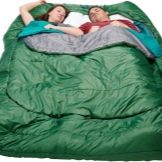
seasonality
There is a classification of all sleeping bags depending on their seasonality. The seasonality of a certain bag affects not only its value, but also on the quality of the filler, the thermal insulation properties of the bag and the number of seasons that a certain model will successfully serve you.
- Interseasonal sleeping bags. A universal option for use in almost any environmental conditions and in all seasons except winter. These are insulated sleeping bags, in which you will feel quite comfortable both at -5 and at -15, but they are not suitable for long-term thermal exposure. As a rule, these sleeping bags have double insulation for improved heat retention.
- Single season sleeping bags
- This includes varieties of sleeping bags for rare trips. during summer and warm seasons. These bag models are lightweight, compact and dry quickly. However, they are used only at relatively high and medium temperatures, are placed inside shelters and have practically no protection from frost.
- Exclusively winter models, which can protect you from significant cold weather - from -16 to -46 degrees Celsius. These bags are characterized by large sizes, as well as multilayer heated insulation.
- Extreme temperature conditions. This includes sleeping bags designed specifically for long trips with a constant influence of low temperatures.


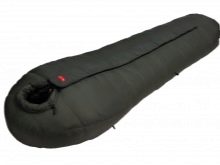
What is comfort temperature?
To understand this concept, you should refer to the classification of sleeping bags by temperature. Usually, the temperature limit indicator can be found in the technical data sheet, which should be attached to all branded sleeping bag models.
- So, the comfort temperature (or effective temperature) this is the highest outside temperature at which you are guaranteed to fall asleep and feel comfortable for an eight-hour sleep, given that you will be dressed in ordinary clothes without insulation. At the same time, you will not feel discomfort from excessively high or low temperatures. Depending on the model of the sleeping bag, thermal coverage may vary, usually from -20 to +30 degrees Celsius.
- Limit (limit) comfort - a temperature value that indicates that during the next 7-8 hours of sleep you will be in a sleeping bag (including wearing thermal underwear) and will not feel discomfort. Here the temperature range varies from -49 to +25 degrees Celsius.
- Extreme temperature (some also call it survival temperature) - the value of the lowest temperature threshold at which the sleeping bag is able to protect its owner from frost and guarantees him a good sleep for 6-7 hours. In this case, you must be dressed in insulated clothing with thermal underwear. As a rule, here thermal coverage is from -60 to +15 degrees Celsius.
- Upper comfort temperature limit. This characteristic is optional and is not indicated on all modern models. It indicates the highest thermal level at which a person will feel comfortable when sleeping in an open bag.
If you want to buy a sleeping bag and determine the indicators presented above, it should be understood that they may manifest themselves differently in relation to certain people. The indicators will increase or decrease depending on your body type, humidity level, your gender (it is believed that women are colder than men), age and body characteristics.


Popular Models
Unfortunately, it is not so easy to find an objective ranking of high-quality and modern sleeping bags in terms of price and quality. Many manufacturers advertise their products in every possible way, trying to belittle the dignity of other firms. Below is a list of foreign brands of sleeping bags that are most popular in the world.
Alexika Canada Plus
One of the most popular models due to its unique thermal insulation, comfortable dimensions even for the most dimensional people, as well as a wide and warm headrest.
Model pluses:
- the presence of a soft and warm headrest with a separate pocket for a pillow;
- there is a wide tape at the zipper, which prevents the material from “chewing”;
- the presence of strong loops for high-quality drying;
- there are comfortable outer flannel sides.

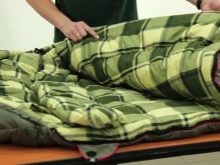
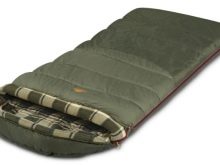
Cons of the model:
- takes up a lot of space even when assembled;
- weighs at least 4.5 kilos;
- rather big cost.
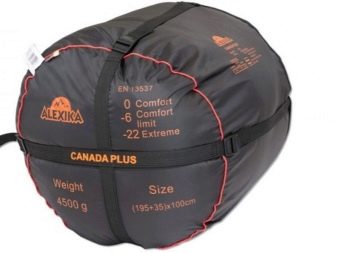
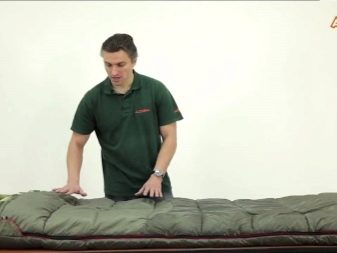
Alexika Siberia Wide Plus
Another popular option from the same company. It has the same excellent thermal insulation, as well as a convenient rectangular shape and a large amount of free space for movement inside the sleeping bag.
Model pluses:
- thanks to the side zipper, it is possible to combine two models into one large one;
- soft structure, the presence of a warm roller in the blanket;
- unlike many other models, here the “dogs” at the lightning are equipped with phosphorescent loops that allow you to navigate in the dark without any problems;
- there is a special valve that prevents involuntary unfastening of the zipper;
- the presence of a protective tape to prevent "chewing" of the fabric;
- there is a spacious and convenient inner pocket for storing money, underwear or a phone.


Cons of the model:
- significant weight for a sleeping bag - almost 3 kg;
- overpriced.
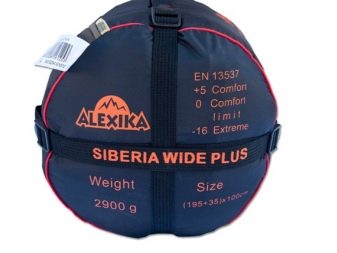
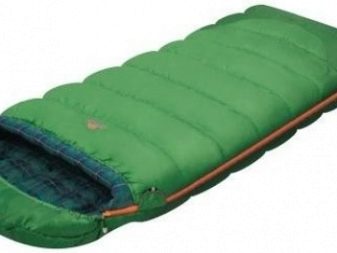
Trek Planet "Fisherman"
A popular sleeping bag model among anglers and hunters. It differs from others in camouflage colors and good thermal insulation in the summer and autumn seasons.
Model pluses:
- there is a hood and collar;
- the presence of a two-way zipper with additional protection against blowing;
- there is an inner pocket;
- side zipper allows you to connect separate two models into one large one;
- this sleeping bag is compact and incredibly light - 1.65 kg;
- inexpensive cost among synthetic sleeping bags.

Cons of the model:
- synthetic interior trim;
- poor quality case.
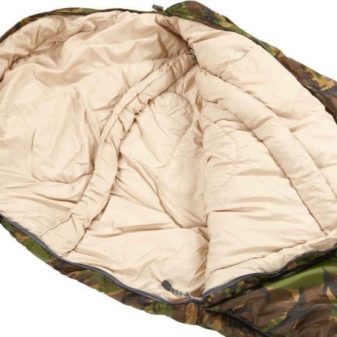
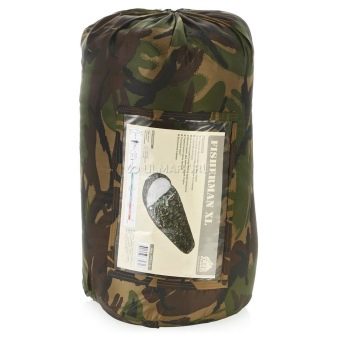
The most famous Russian sleeping bags
"Antarctica"
A popular model of a sleeping bag made of weifiber. Popular among anglers and hunters due to camouflage colors and high-quality heat retention.
Model pluses:
- low cost;
- sufficient size for a person of any height and physique;
- there is a warm headrest that can be converted into a hood;
- natural flannelette lining;
- There is a two-way zipper.
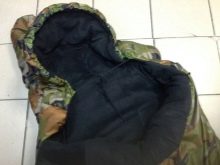
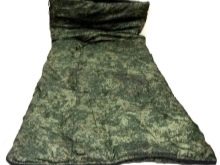

Cons of the model:
- large size even when folded;
- significant weight, which complicates the dragging of an object during a hike;
- non-compression packing case;
- some have noted bulging seams from the headrest and flannelette after prolonged use.

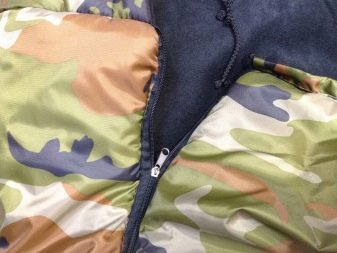
"Northern Way"
Modern sleeping bag made of high quality sheep wool. It is also popular among fishermen and hunters, as it has camouflage colors and is able to withstand significant temperature changes.
Model pluses:
- there is a warm and soft hood;
- large dimensions in relation to length (230 cm) and width (95 cm) - suitable for both tall and overweight people;
- there is a water-repellent coating;
- there are additional insulating elements in the form of a thermal fiber insulation;
- can be washed both in the machine and by hand.
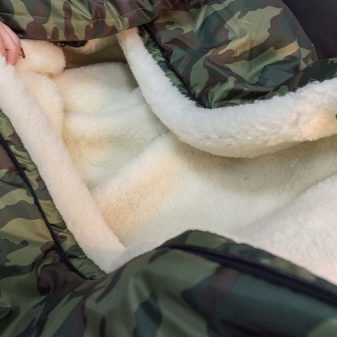

Minuses:
- large size and weight when folded;
- drying takes a long time, which is impossible to ensure in the conditions of the campaign.
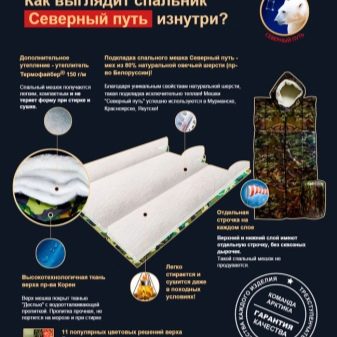
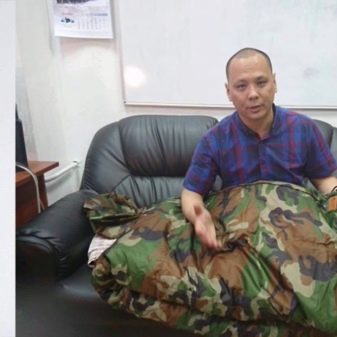
How to choose?
Choosing a good bag is not an easy task for inexperienced travelers. Many people prefer brands and beautiful models that will look nice against the backdrop of Soviet bags, but they forget the most important thing. If you're out camping on a cloudy, windy, and cold night, you don't care what your sleeping bag looks like, all you want is to keep warm. Below is a list of criteria to consider when buying a sleeping bag.

Trip type
The first stage is to determine the type of trip: whether it will be a simple fishing trip with a single overnight stay not far from the city, a trip with children for 2-3 days, or a long trip for a week to the mountains or nature. For each type of travel, a certain type of sleeping bag will more or less suit.
So, for simple trips for one night can be ideal and non-brand options for sleeping bags or blankets with synthetic filling and thermal range from 0 to 20 degrees Celsius. These bags have their advantages: they are light, inexpensive, they do not need careful care, however, they save your heat accordingly.
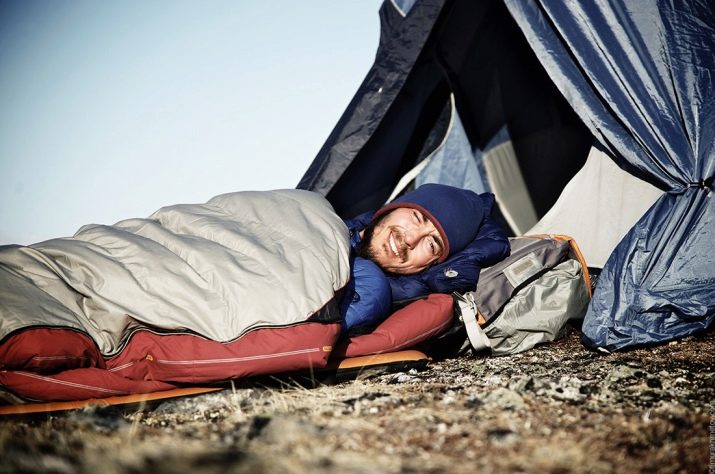
Season
Another important point when choosing a sleeping bag is the current weather conditions that will accompany you during the entire trip. The most important thing here is to choose a sleeping bag model with the optimal difference in temperature comfort and the limit of this value.
Particular attention to the comfort temperature should be paid to people with a thin physique, women (especially pregnant women) and the elderly. Only experienced travelers, for example, professional climbers, pay attention to the so-called extreme temperature indicator.


Model length
To date, brand stores offer only two types of sleeping bags, depending on their length: Regular and Long. The first is designed for people with a height of up to 180 centimeters. The second is adapted for denser people with a height of up to 198 centimeters.
The choice of bag length depends not only on your height, but also on the current season. So, in the summer season it is worth adding at least 15 centimeters to your height to the desired length of the sleeping bag, in spring and autumn seasons - at least 30 centimeters. This length is necessary to ensure freedom of movement inside the sleeping bag and maintain temperature.
When buying a sleeping bag feel free to exercise your right and estimate its size in relation to your height and physique. So you can evaluate the comfort of the model, as well as whether it will be convenient for you to change the position of the body while in a sleeping bag.
To appreciate the convenience of the model, just climb into the bag and fasten it, put on the hood. In a comfortable sleeping bag, the material at the feet and head should not be stretched. A large amount of free space should be located at the hands so that you can calmly change the position of the body.

External characteristics
Before choosing a sleeping bag model, you should pay attention to the following external factors.
- Filler. It should be distributed evenly over the entire area of the sleeping bag. In a quality sleeping bag, there should be no lumps inside the material. This should not be feared if your sleeping bag model is quilted.
- Hood. It is advisable to choose models of sleeping bags with a hood with a screed. The shape of the hood should be anatomical, which takes into account the position of the neck, skull and does not block peripheral vision.
- Pillow. Some modern models of sleeping bags have a special pocket for a pillow - when hiking, this attribute is responsible not only for convenience, but also for keeping heat in the head area.
- Lightning. This element in the sleeping bag is responsible for keeping warm and prevents wind and cold from penetrating into the bag. A zipper in a good bag should open and close freely. The presence of a protective tape near the zipper (which will prevent the fabric from biting), as well as a safety valve (to prevent cold from entering through the zipper), will be an additional plus. To date, there are models of sleeping bags with a right or left zipper, which can be connected to each other, forming one continuous sleeping bag.
- Pocket. Inside comfortable sleeping bags, there must be a pocket where you can store papers, documents, a phone, and even dry linen.The pocket should be zippered, and also be in a place accessible to the hands, but not interfere with the movement of the body inside the bag.
- Drying. After each night spent in the bag, it should be dried and warmed in the sun. To do this, in modern models there are special loops inside or outside the bag, on which it is more convenient to attach it to hooks or branches.
- Insurance. Together with a well-fastened zipper, a special fastener should be present in the bag, which will regulate and fix accidental unfastening of the zipper.
- Children's models. A special part of sleeping bags are models designed exclusively for children. So, for children under 3 years old, it is recommended to buy warm bags with natural fillers. For children under 8 years old, sleeping bags of the “envelope” and “blanket” type are best suited, after 8 years - an ordinary sleeping bag of the “cocoon” type.
- Price. The better the product, the more it will cost - this is what the modern competitive market teaches us. When choosing such an important thing as a sleeping bag, you should not spare money, because your health and well-being in the coming nights and days will depend on the convenience and quality of the model you bought. To be sure of the quality of a sleeping bag, it is recommended to buy models of well-known brands with a good reputation.
- Coating. A distinctive feature of most low-quality and cheap bags is a smooth and sliding surface, due to which you will slide on uneven surfaces and risk falling, for example, from a mountain, cliff or slide. Changing the position of the body in such bags is extremely inconvenient. Non-slip sleeping bags are ideal.
- Bag color. If you are a hunter and fisherman, then you should choose camouflage sleeping bags - they are harder to spot, they attract less attention and blend well with the landscape.
If you're a casual hiker or just like hiking, it's best to choose bags that are as bright as possible - they're easier to find and easier to spot if your bag is blown away by the wind, for example. It is believed that the same white bags are best seen in the dark, which helps a lot with finding your bed on a dark summer night after going to the toilet.


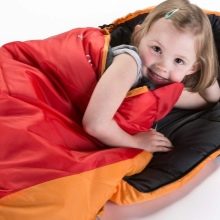
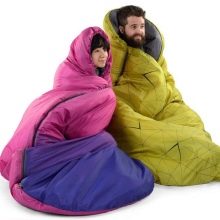
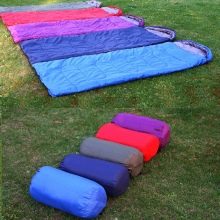
Care rules
Sleeping bags, like any other outdoor equipment, need careful and regular care. Due to weather conditions, they are constantly exposed to moisture and cold, which, if the bag is not properly cared for, adversely affects the thermal insulation properties of the model and its service life.
Below are the points for the care and proper operation of sleeping bags, which should be paid attention to by every hiker.

Storage and packaging
An important point in caring for a sleeping bag is how it is stored. The fact is that when buying a sleeping bag, it is usually neatly packed and folded, but in the future it will not be possible to fold it like that. It is not uncommon for inexperienced hikers to spend hours packing a sleeping bag, but professional climbers know that a quality bag is not damaged even by hasty packing into a backpack, the main thing is that the sleeping bag is dry and not near wet clothes.
After the hike is over, be sure to leave the sleeping bag unfolded at home for a few days. It must dry and straighten out so that the filling material does not deteriorate.


Wash
Fortunately, almost all modern models of bags are sold together with instructions that indicate exactly how and how often to wash a particular model of a sleeping bag. Usually sleeping bags are washed no more than a few times a year if necessary - this applies to the inside. The outer part will be enough to wipe with a cloth when dirty. The number of washes may vary depending on the filler.
In addition to washing, some models, for example, made of membrane fabric or with a water-repellent coating, need restoration and special care over time. Particular attention should be paid to down-filled sleeping bags - they are incredibly warm and keep the temperature perfectly, but they are extremely resistant to moisture and require a long drying time.

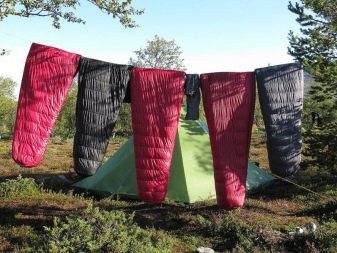
Moisture
The main enemy in storing any sleeping bag is excess moisture. When packing your sleeping bag, make sure that it is thoroughly dried. The container for its storage or transportation must also be dry and have access to oxygen. The accumulation of moisture on the material of the sleeping bag reduces its thermal insulation properties and leads to damage to the filler.

When choosing a place to spend the night, you should choose the most dry area, and also do not lie down near the walls near the tent - condensation often accumulates on them in the morning. After each night spent on a hike, the sleeping bag should dry thoroughly.
See the next video for an overview of sleeping bags.




























